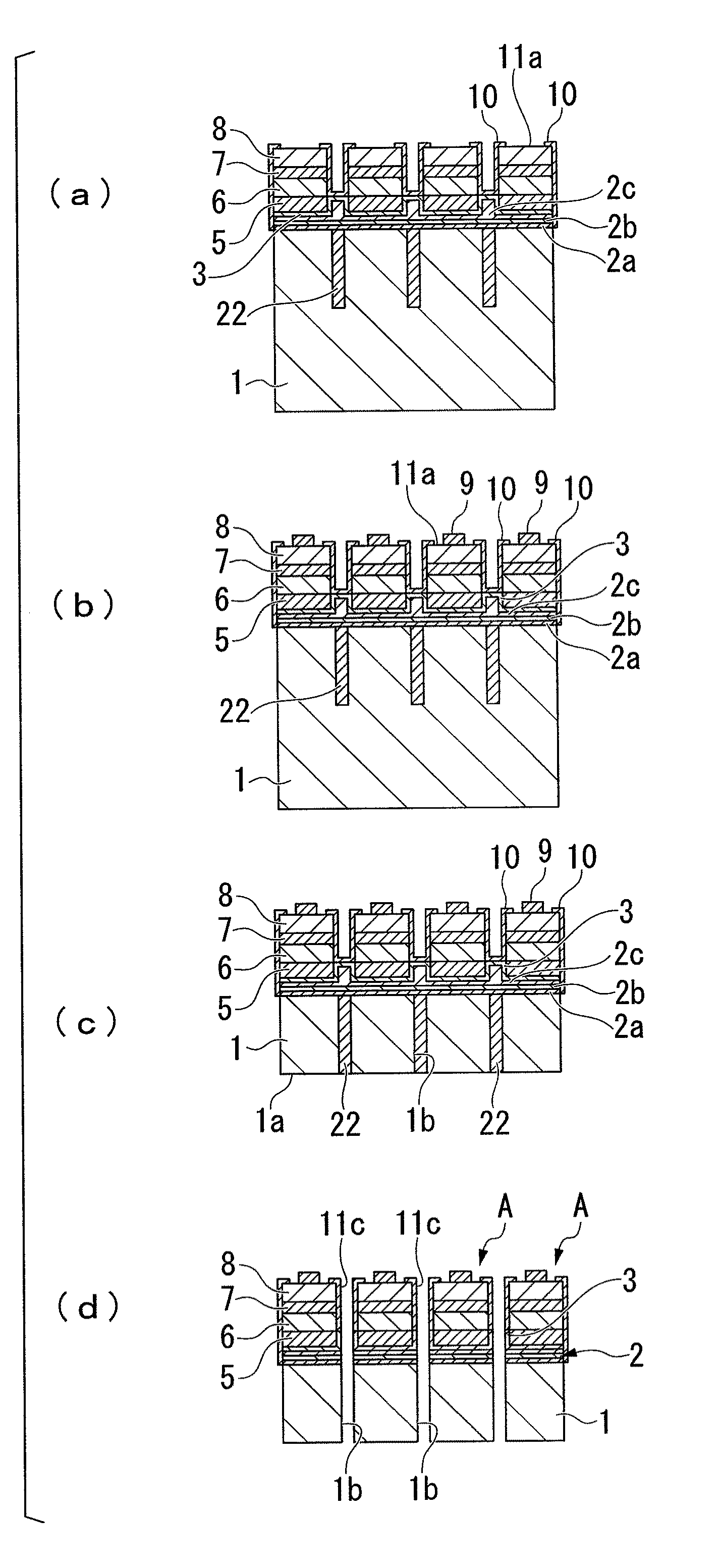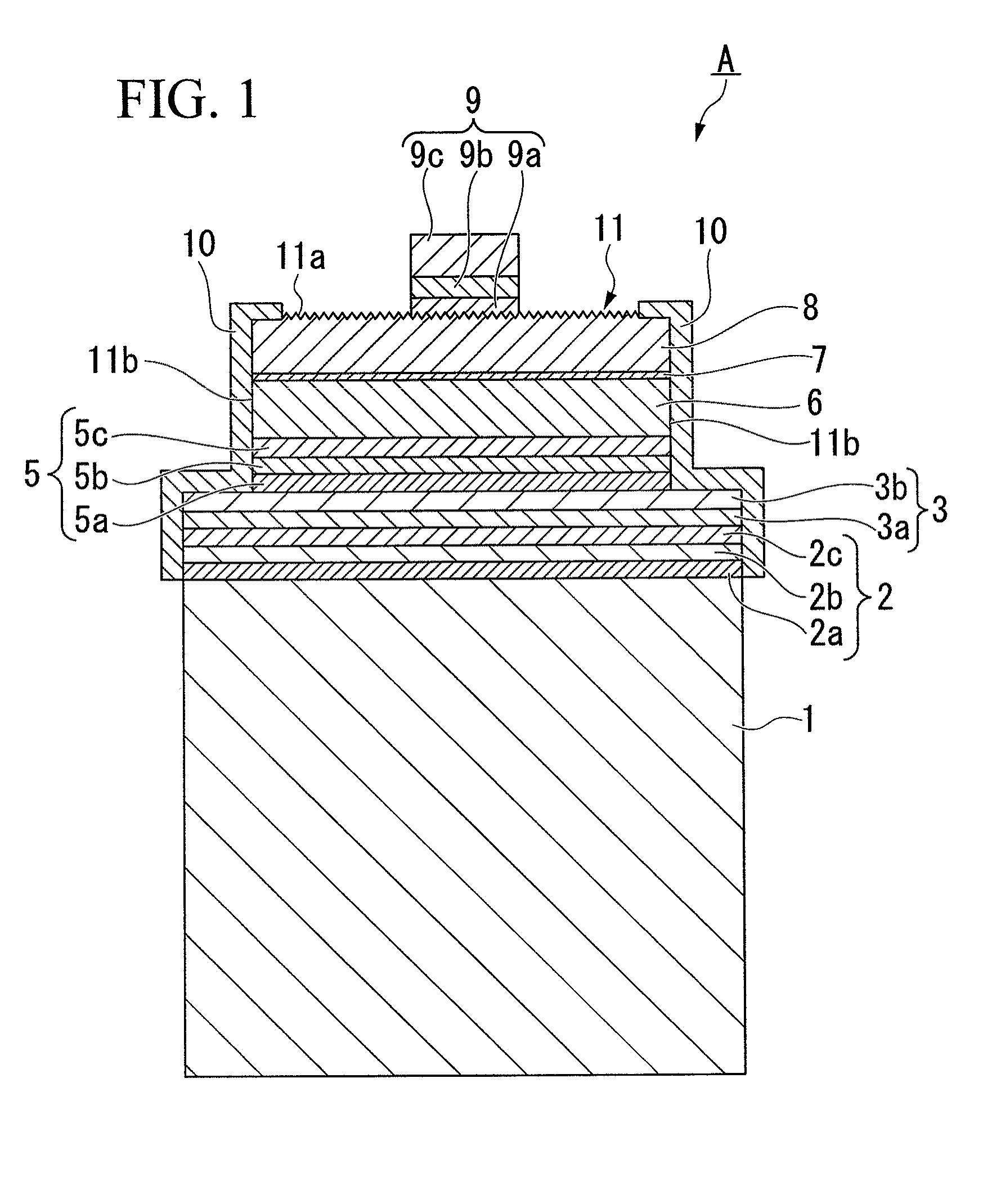Method for producing light-emitting diode
a technology of light-emitting diodes and diodes, which is applied in the direction of basic electric elements, electrical equipment, semiconductor devices, etc., can solve the problems of chip heat up, chip deterioration, and many problems of conventional elements using sapphire as a substrate, so as to prevent the deterioration of current-voltage characteristics
- Summary
- Abstract
- Description
- Claims
- Application Information
AI Technical Summary
Benefits of technology
Problems solved by technology
Method used
Image
Examples
example 1
[0132]A light-emitting diode A illustrated in FIG. 1 was prepared in the manner described below.
[0133]Namely, a buffer layer of thickness 40 nm composed of AlN was formed on a substrate composed of sapphire, and an undoped GaN underlayer of thickness 2 μm, a Si-doped n-type GaN contact layer of thickness 2 μm and an n-type In0.1Ga0.9N cladding layer of thickness 20 nm (the n-type semiconductor layer), a light-emitting layer having a multiple quantum well structure in which a Si-doped GaN barrier layer of thickness 15 nm and an In0.2Ga0.8N well layer of thickness 2 nm were laminated 5 times and finally provided with a barrier layer, and a Mg-doped p-type Al0.1Ga0.9N cladding layer of thickness 10 nm and a Mg-doped p-type Al0.02Ga0.98N contact layer of thickness 200 nm (the p-type semiconductor layer) were laminated sequentially onto the buffer layer, yielding a laminated semiconductor layer.
[0134]Subsequently, an ohmic contact layer of thickness 2 nm, a reflective layer of thickness ...
PUM
 Login to View More
Login to View More Abstract
Description
Claims
Application Information
 Login to View More
Login to View More - R&D
- Intellectual Property
- Life Sciences
- Materials
- Tech Scout
- Unparalleled Data Quality
- Higher Quality Content
- 60% Fewer Hallucinations
Browse by: Latest US Patents, China's latest patents, Technical Efficacy Thesaurus, Application Domain, Technology Topic, Popular Technical Reports.
© 2025 PatSnap. All rights reserved.Legal|Privacy policy|Modern Slavery Act Transparency Statement|Sitemap|About US| Contact US: help@patsnap.com



